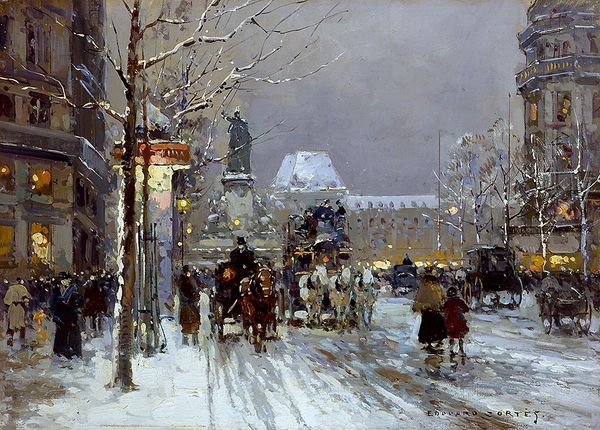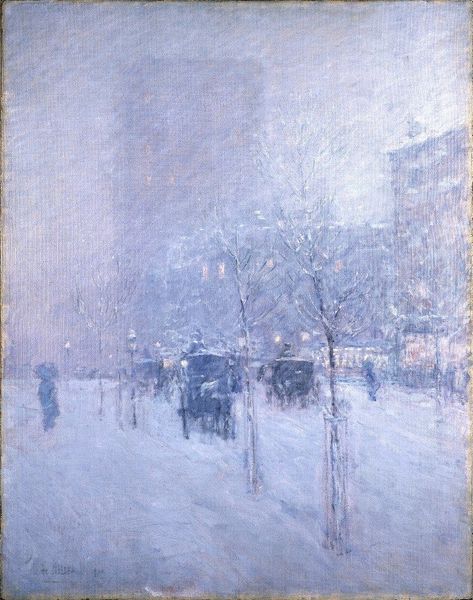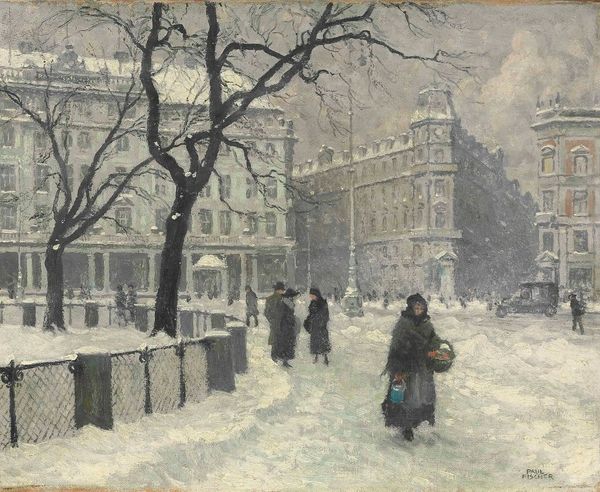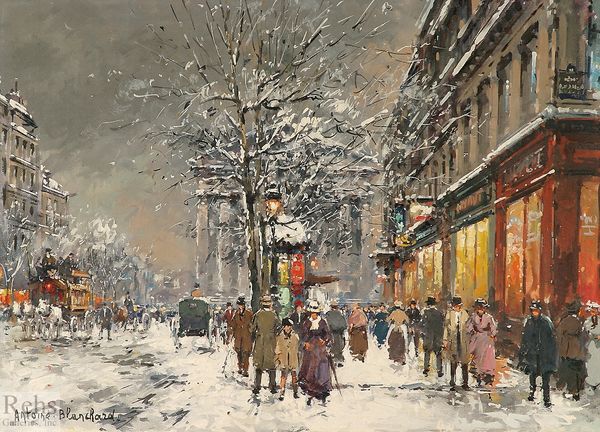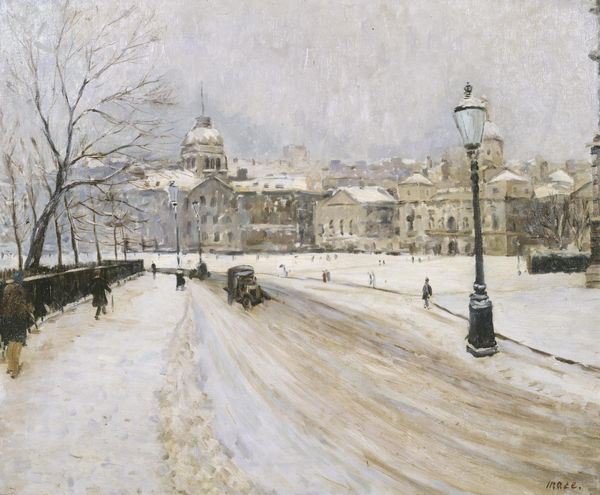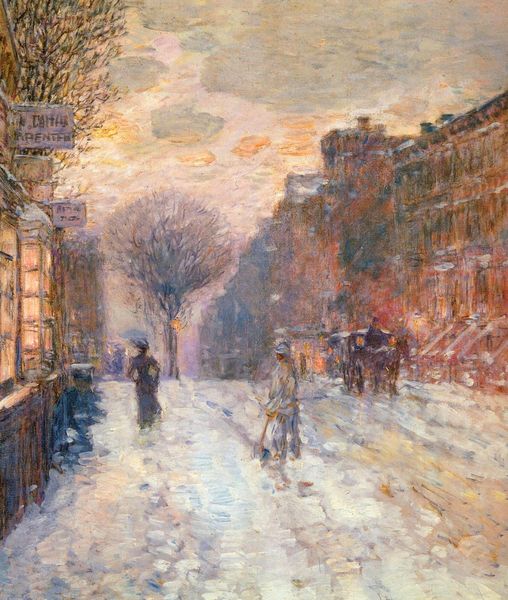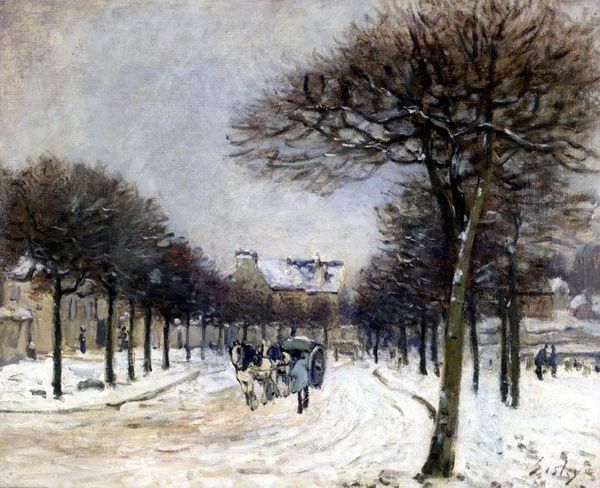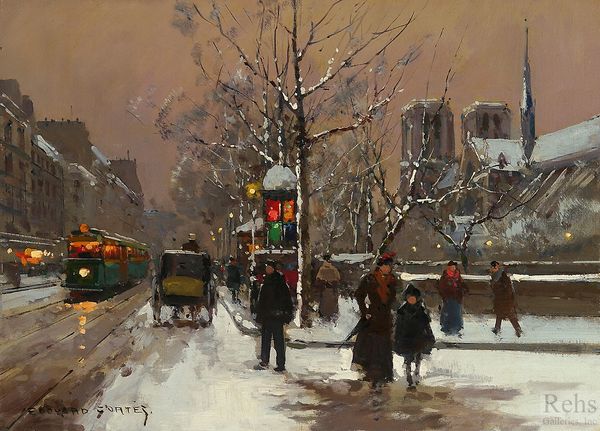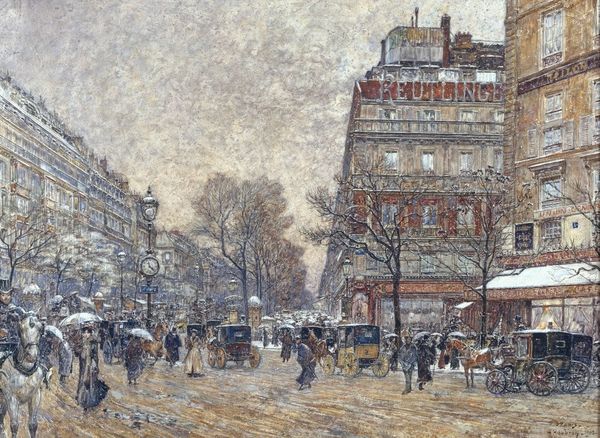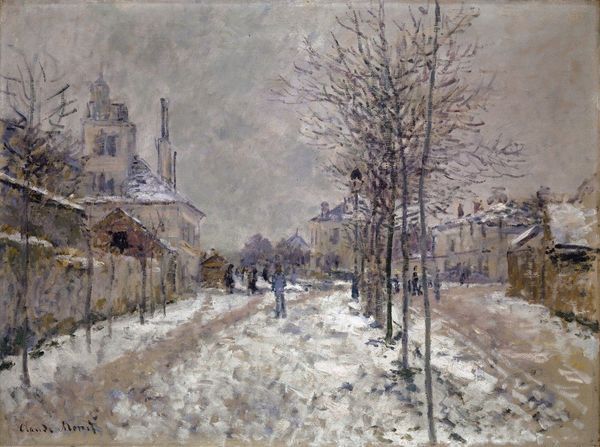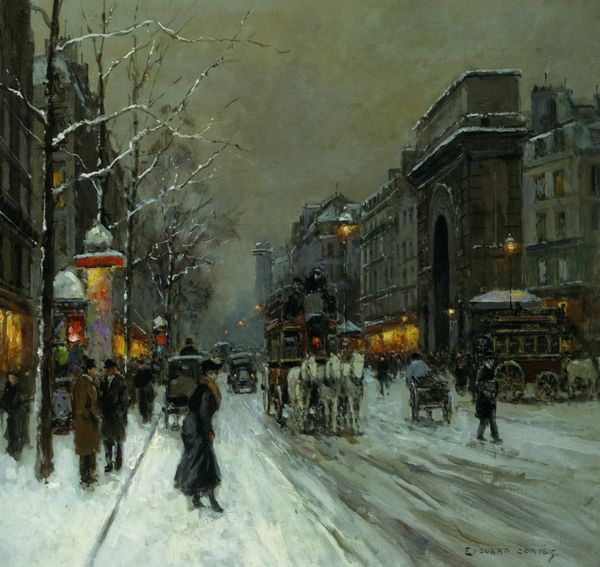
#
cityscape photography
#
urban landscape
#
abstract painting
#
landscape
#
urban cityscape
#
city scape
#
street graffiti
#
urban life
#
urban art
#
urban photography
#
watercolor
Copyright: Public Domain: Artvee
Editor: This is Paul Signac's "Snow, Boulevard de Clichy, Paris," painted in 1886. I’m immediately drawn to the almost overwhelming whiteness and how it affects the light in the scene. What structural elements do you find most compelling? Curator: Note how Signac employs pointillism, meticulously applying small dots of pure color, avoiding mixing on the palette. The structure arises from this juxtaposition of hues, creating a visual vibration, rather than relying on tonal gradations to define form. Editor: Yes, you can see that shimmering effect. So, rather than smooth transitions, there's this active surface created by all the points of color. What purpose does it serve? Curator: Consider the optical mixing that occurs in the viewer's eye. The pure colors, placed side-by-side, create a more luminous and vibrant effect than would be achieved by blending them. Look closely at the shadows. Editor: They aren't just grey, but purplish and bluish. The shadow then appears to almost have an internal life because of it, not simply being an absence of light. What’s the implication? Curator: Exactly! Signac moves beyond a simple representation. He engages scientific theories of optics and color, turning a realistic urban scene into an exploration of perception itself. Form and the content become nearly indivisible. The painting is a system. Editor: That’s fascinating, using the painting to investigate light. I hadn't considered how deliberate and technical pointillism truly is. Curator: It’s more than a pretty scene; it is the theory put into vibrant practice.
Comments
No comments
Be the first to comment and join the conversation on the ultimate creative platform.
